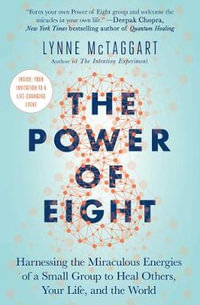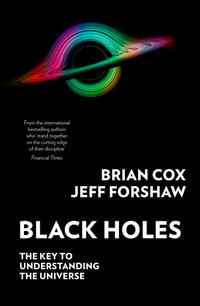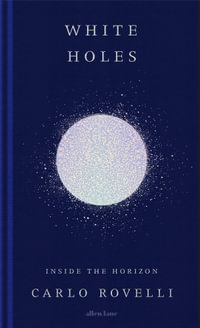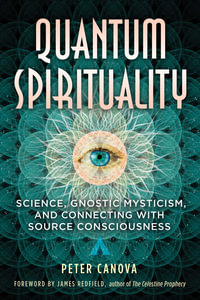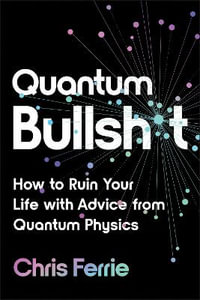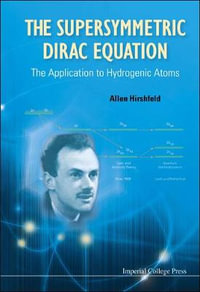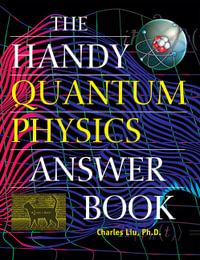
Quantum Mechanics
Symbolism of Atomic Measurements
By: Berthold-Georg Englert (Editor), Clarice Schwinger (Editor), Julian Seymour Schwinger (Editor)
Hardcover | 27 February 2003 | Edition Number 2
At a Glance
502 Pages
Revised
23.39 x 15.6 x 2.69
Hardcover
$176.90
or 4 interest-free payments of $44.23 with
orAims to ship in 7 to 10 business days
Industry Reviews
From the reviews:
"Quantum Mechanics: Symbolism of Atomic Measurements is not just another textbook on quantum mechanics. Rather, it contains truly novel elements of both content and style. In particular, Schwinger begins his treatment not with de Broglie waves or the Schroedinger equation but rather with the measurement process. His idea is to derive, or at least make plausible, the formalism of state vectors, bras and kets, by reference to quantum measurements such as the Stern-Gerlach experiment. This [...] is simply the basis of a new way of teaching quantum mechanics. This opening chapter should be of interest to all scholars of quantum theory and might form a new topic of research for philosophers of quantum mechanics." (Contemporary Physics, 44/2, 2003)
"There are dozen of excellent textbooks on the market. But this one really is different." (T. Kibble, The Times Higher Education Supplement, 2001)
"The material covered is superficially similar to that of a typical graduate quantum mechanics course [...] However, each chapter has beautiful and unusual treatments of familiar topics. [...] This book would make an outstanding supplement and reference for a graduate quantum mechanics course. Theoretical physicists will delight in this wonderful book, which should be available in the library system of any institution with a research or graduate program in physics. Graduate students through professionals." (CHOICE, Dec. 2001)
"The book is a tour-de-force. Once the groundwork is laid, he goes into subjects with the mathematical virtuosity for which he was famous - not advanced mathematics, but the incredible use of simple mathematics. ... there are gems throughout the book. ... it is a wonderful book for a professor to own, like Feyman's lectures, because there is so much to learn from it. ... The book was lovingly edited from some UCLA lecture notes, by Berthold-Georg Englert, a longtime student and assistant of Schwinger's ... ." (Daniel Greenberger, American Journal of Physics, Vol 71 (9), 2003)
"Editor Englert has performed a service for physicists everywhere by making available this book, which is based on Schwinger's unpublished UCLA lecture notes. ... each chapter has beautiful and unusual treatments of familiar topics. ... There are excellent problems at the end of each chapter. This book would make an outstanding supplement and reference for a graduate quantum mechanics course. Theoretical physicists will delight in this wonderful book, which should be available in the library system of any institution with a research or graduate program ... ." (M. C. Ogilvie, CHOICE, December, 2001)
"The book commences with an absorbing prologue in which Schwinger talks us through the development of quantum mechanic and quantum field theory in an easy conversational style. ... The book is packed with exercises for the reader to attempt. ... Anyone who works religiously through these exercises will acquire a thoroughly adequate command of quantum mechanics." (W. Cox, Mathematical Reviews, Issue 2002 h)
"Quantum mechanics: Symbolism of Atomic Measurements is not just another textbook on quantum mechanics. Rather, it contains truly novel elements of both content and style. ... This opening chapter should be of interest to all scholars of quantum theory and might form a new topic of research for philosophers of quantum mechanics. Throughout the text, new material is presented at a breathless pace. All the usual elements of the subject are there, but Schwinger's presentation reveals surprises in even the most familiar of these." (S. M. Barnett, Contemporary Physics, Vol. 44 (2), 2003)
"In the beginning, the editor has added an important material in the form of a prologue ... . This is one of the best treatments of the philosophy of quantum mechanics, which I have come across. ... One of the major features of the book is the incorporation of a large number of problems ... . the contents of the problems are well integrated in the text and have become part of it. This has caused a rich and tight structure of the logical arguments." (S. S. Bhattacharyya, Indian Journal of Physics, Vol. 76B (3), 2002)
"This unique textbook is based upon the lecture notes that Julian Schwinger wrote up for the students of the quantum mechanics course ... . this book would probably make an ideal quantum mechanics reference ... . There are a large number of problems included at the end of each chapter, which comprise an excellent resource for any lecturer ... . this textbook is a unique resource, which provides an insight into the thoughts and deliberations of one of this century's giants of quantum mechanics." (P. C. Dastoor, The Physicist, Vol. 38 (5), 2001)
"There are dozens of excellent textbooks on the market. But this one really is different. ... there is a carefully argued historical and philosophical prologue that sets the scene, centred on the two key features of quantum physics - atomicity and its probabilistic character; this alone would make the book worthwhile. The emphasis on discrete variables is a very modern approach... . To a theoretical physicist, this book is a delight and a wonderful resource. ... This is a book I shall treasure." (Tom Kibble, Times Higher Education Supplement, September, 2001)
| Prologue | p. 1 |
| Fall Quarter: Quantum Kinematics | |
| Measurement Algebra | p. 29 |
| Stern-Gerlach experiment | p. 29 |
| Measurement symbols | p. 31 |
| State vectors | p. 36 |
| Successive measurements. Probabilities | p. 38 |
| Probability amplitudes. Interference | p. 41 |
| "Measurement disturbs the system" | p. 45 |
| Observables | p. 47 |
| Algebra of Pauli's operators | p. 50 |
| Adjoint symbols, Hermitian symbols | p. 52 |
| Matrix representations | p. 55 |
| Traces | p. 57 |
| Unitary geometry | p. 59 |
| Column and row vectors, wave functions | p. 59 |
| Two arbitrary components of Pauli's vector operator | p. 62 |
| Unitary operators | p. 66 |
| Unitary operator bases. Complementarity | p. 68 |
| Quantum degrees of freedom | p. 75 |
| The continuum limit | p. 81 |
| Heisenberg's commutation relation | p. 81 |
| Schrödinger's differential-operator representation | p. 84 |
| Problems | p. 86 |
| Continuous q, p Degree of Freedom | p. 99 |
| Wave functions | p. 99 |
| Expectation values and their spreads | p. 107 |
| States of minimal uncertainty | p. 109 |
| States of stationary uncertainty | p. 112 |
| Hermite polynomials | p. 116 |
| Completeness of stationary-uncertainty states | p. 120 |
| Eigenvectors of non-Hermitian operators | p. 122 |
| Classical limit | p. 129 |
| More about stationary-uncertainty states | p. 132 |
| Problems | p. 133 |
| Angular Momentum | p. 145 |
| Infinitesimal unitary transformations | p. 145 |
| Infinitesimal rotations | p. 146 |
| Common eigenvectors of J2 and Jz | p. 148 |
| Decomposition into spins | p. 151 |
| Angular momentum of a composite system | p. 154 |
| Finite rotations. Eulerian angles | p. 158 |
| Rotated angular-momentum eigenvectors | p. 164 |
| Problems | p. 172 |
| Galilean Invariance | p. 177 |
| Generators of infinitesimal transformations | p. 177 |
| Hamilton operator for a system of elementary particles | p. 183 |
| Problems | p. 184 |
| Winter Quarter: Quantum Dynamics | |
| Quantum Action Principle | p. 189 |
| Equations of motion | p. 189 |
| Conservation laws | p. 191 |
| Sets of q, p pairs of variables | p. 193 |
| Wave functions for force-free motion | p. 196 |
| Quantum action principle | p. 201 |
| Principle of stationary action | p. 203 |
| Change of description | p. 206 |
| Permissible variations | p. 207 |
| Problems | p. 210 |
| Elementary Applications | p. 215 |
| Time transformation functions | p. 215 |
| Free particle | p. 215 |
| Constant force | p. 216 |
| Linear restoring force: Harmonic oscillator | p. 218 |
| Short times | p. 219 |
| Harmonic oscillator: Energy eigenvalues | p. 221 |
| Free particle and constant force: State density | p. 222 |
| Harmonic oscillator: Energy eigenstates | p. 226 |
| Free particle and constant force: Energy eigenstates | p. 228 |
| Constant force: Asymptotic wave functions | p. 230 |
| WKB approximation | p. 235 |
| Zeros and extrema of the Airy function | p. 240 |
| Constant restoring force | p. 243 |
| Rayleigh-Ritz variational method | p. 246 |
| Problems | p. 249 |
| Harmonic Oscillators | p. 259 |
| Non-Hermitian operators | p. 259 |
| Driven oscillator | p. 262 |
| Time-independent drive | p. 264 |
| Slowly varying drive | p. 266 |
| Temporary drive | p. 268 |
| Remarks on Laguerre polynomials | p. 275 |
| Two-dimensional oscillator | p. 277 |
| Three-dimensional oscillator | p. 284 |
| Problems | p. 287 |
| Hydrogenic Atoms | p. 293 |
| Bound states | p. 293 |
| Parameter dependence of energy eigenvalues | p. 297 |
| Virial theorem | p. 299 |
| Parabolic coordinates | p. 302 |
| Weak external electric field | p. 305 |
| Weak external magnetic field | p. 309 |
| Insertion: Charge in a homogeneous magnetic field | p. 313 |
| Scattering states | p. 318 |
| Problems | p. 322 |
| Spring Quarter: Interacting Particles | |
| Two-Particle Coulomb Problem | p. 331 |
| Internal and external motion | p. 331 |
| Rutherford scattering revisited | p. 334 |
| Additional short-range forces | p. 340 |
| Scattering of identical particles | p. 343 |
| Conserved axial vector | p. 346 |
| Weak external fields | p. 352 |
| Problems | p. 355 |
| Identical Particles | p. 361 |
| Modes. Creation and annihilation operators | p. 361 |
| One-particle and two-particle operators | p. 367 |
| Multi-particle states | p. 371 |
| Dynamical basics | p. 372 |
| Example: General spin dynamics | p. 373 |
| General dynamics | p. 377 |
| Operator fields | p. 380 |
| Non-interacting particles | p. 382 |
| Problems | p. 388 |
| Many-Electron Atoms | p. 391 |
| Hartree-Fock method | p. 391 |
| Semiclassical treatment: Thomas-Fermi model | p. 396 |
| Correction for strongly bound electrons | p. 405 |
| Quantum corrections and exchange energy | p. 410 |
| Energy oscillations | p. 414 |
| Problems | p. 416 |
| Electromagnetic Radiation | p. 423 |
| Lagrangian, modes, equations of motion | p. 423 |
| Effective action | p. 427 |
| Consistency check | p. 429 |
| Free-space photon mode functions | p. 433 |
| Physical mass | p. 435 |
| Infrared photons | p. 437 |
| Effective Hamiltonian | p. 441 |
| Energy shift | p. 444 |
| Transition rates | p. 447 |
| Thomson scattering | p. 450 |
| Problems | p. 453 |
| Index | p. 457 |
| Table of Contents provided by Publisher. All Rights Reserved. |
ISBN: 9783540414087
ISBN-10: 3540414088
Published: 27th February 2003
Format: Hardcover
Language: English
Number of Pages: 502
Audience: Professional and Scholarly
Publisher: Springer Nature B.V.
Country of Publication: DE
Edition Number: 2
Edition Type: Revised
Dimensions (cm): 23.39 x 15.6 x 2.69
Weight (kg): 0.88
Shipping
| Standard Shipping | Express Shipping | |
|---|---|---|
| Metro postcodes: | $9.99 | $14.95 |
| Regional postcodes: | $9.99 | $14.95 |
| Rural postcodes: | $9.99 | $14.95 |
How to return your order
At Booktopia, we offer hassle-free returns in accordance with our returns policy. If you wish to return an item, please get in touch with Booktopia Customer Care.
Additional postage charges may be applicable.
Defective items
If there is a problem with any of the items received for your order then the Booktopia Customer Care team is ready to assist you.
For more info please visit our Help Centre.



